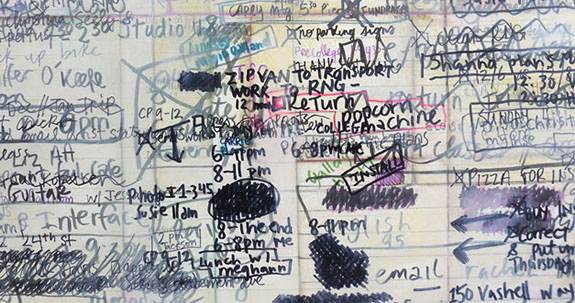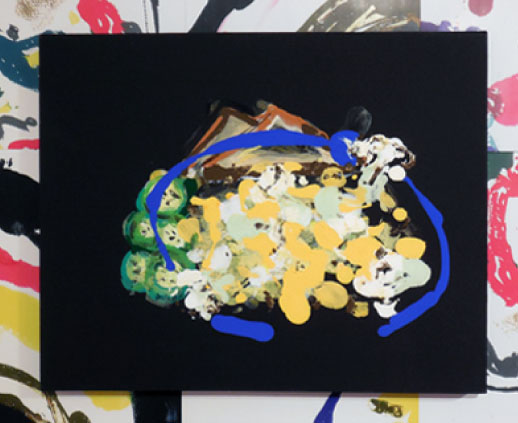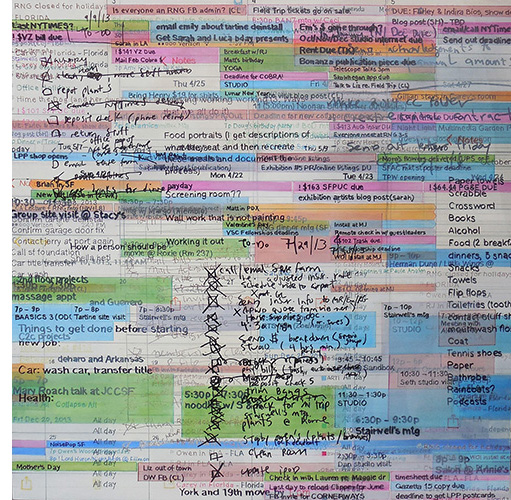 |
The art world attracts and creates polymaths. If you’re reading this you may well be a critic, artist, writer, arts administrator or curator or perhaps all of these things, depending on the day of the week and what resides in your job quiver. If so, you’ll be interested in Working on It, a two-part collaboration between the artists who run the Martina}{Johnston Gallery and the Royal Nonesuch Gallery, because it affirms who most of us are in the art world. We are creatures who identify as both makers and administrators, and whose daily lives are tinged with residues from all these activities. The two shows, which feature both groups of artists interacting with each other and with each other’s work, probes the intricacies of intermingled lives.
Since the exhibition is in two parts, you’ll need to visit the two spaces where the works appear. Working On It: Part I is installed in the Martina }{ Johnston Gallery, a tree-shaded, wainscoted house/gallery run by Indira Morre and Farley Gwazda in West Berkeley. Royal Nonesuch is in the Temescal neighborhood of Oakland. Drive, if you can, to minimize the time spent shuttling between the two sites.
 |
At Martina }{ Johnston, artists Elizabeth Bernstein, Carey Lin, and Adam Thorman’s small bodies of work explore Indira and Farley’s relationship (they’re partners) and the complexities of
 |
 |
Indira Morre’s series of paintings explores Elizabeth Bernstein, Carey Lin, and Adam Thorman’s daily lives by projecting images of their planners (digital and Moleskine) onto wood panels, where she re-inscribes what’s written to create fresh layers in her own hand. By tracing their inscriptions repeatedly, she mastered each artist’s handwriting, moving through their schedules as though she were doing the planning. But the planning and re-planning is far from linear, as titles like Liz 1: Two Weeks in the Life of an Artist attest: You can see thickets of entries mixed with thin layers of oil paint,
blending the days and weeks into a vaporous simultaneity. It drives home the idea that, while “planning” is personal and individual, it is also spatial.
So what do we know about these artists after examining these viscous layers of practice and identity? What do the artists now appear to know about each other? It’s clear that the divisions between arts professional, artist, lover, and citizen are porous—you are no less a curator on Tuesday than you are a boyfriend in March. Identity here, like mark making or picture taking, is a kind of structure that collapses when freighted with the reality of shifting moments and spaces. Give yourself a few hours, then, to work on and with this show to unravel and reconstruct the component pieces —if you can take time off from your overfilled quiver of jobs.